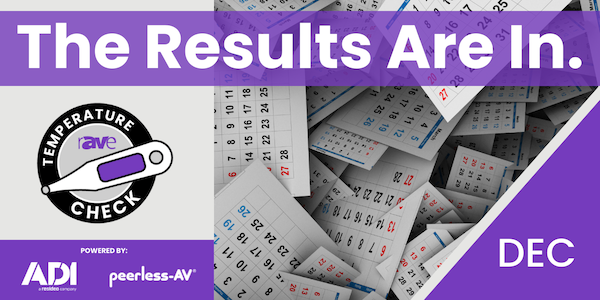NetDragon, Edmodo and the Impact of This Week’s Acquisition

By Ben Davis
Futuresouce
This week, Chinese online games company, NetDragon Websoft, announced its agreement to acquire US-based Edmodo, the global education network. The deal will likely present growth opportunities for NetDragon’s broader portfolio of education solutions and could have competitive ramifications for companies operating across the breadth of the education technology sector.
NetDragon’s New Triple Threat
In a deal worth $137.5 million USD, Edmodo joins Promethean and Jumpstart in NetDragon’s stable of ed tech companies, completing the triple threat of hardware, content and community platform.
With Promethean, bought in 2015, NetDragon acquired an install base of more than one million classrooms across the globe which use Promethean interactive displays. Jumpstart, acquired in July 2017, provides NetDragon with a portfolio of educational games, workbooks, videos and apps. Now, Edmodo’s education network, with more than 90 million users across 194 countries, is paving the way for a consolidated offering that reflects what’s been happening in the entertainment space.
Lessons From Beyond the School Gates
For the entertainment technology and e-commerce giants it all begins with the eyeballs. If you don’t have people engaging with your products and services, then they’ll be looking at somebody else’s instead. Get the eyeballs away from your competitors. Worry about the monetization at a later date. Many of the major players in entertainment technology are now offering free tools and content to build out their user bases, converting them to paying customers further down the line; preferably via regular subscription payments.
The freemium business model is a little trickier to implement in the education market where the ability to generate income via advertising is largely prohibited. As such, Edmodo has struggled to generate sustainable revenue streams and a definitive strategy to monetize its 90 million users remains unclear. This week’s acquisition will offer NetDragon opportunities to do this by upselling a broader portfolio of solutions across the Edmodo user base.
Social Networks, Privacy and Profit
In the world of social networks, where Facebook can generate billions through ads, the nature of Edmodo’s user base (around 90% are students in K-12 education), as well as its sector and its position as a secure platform in which users can connect and share resources, makes advertising a difficult proposition.
An alternative is to take the upsell route, which Edmodo has pushed with a basic free version that teaching staff can improve upon by paying for additional functionality. Then there are app stores and a marketplace. All of these strategies have failed to generate significant sustainable revenues for Edmodo.
All those millions of subscribers could represent a potential data goldmine, but it’s a locked gate. Edmodo is a signatory to the Student Privacy Pledge, a legally enforceable statement by ed tech companies to safeguard student privacy. In a world where the General Data Protection Regulation (GDPR) is about to come into force in the EU and the Facebook boss is being questioned by US senators on the exploitation of users’ personal data, leveraging student data is a risky business.
Putting It Together
However, introducing Edmodo into NetDragon’s brace of ed tech companies creates a synergetic whole. The broader portfolio of interactive displays, gaming content and a social media platform starts to present opportunities for revenue. For example, the student management features of Edmodo could be used to complement the collaboration functionality of Promethean’s interactive displays. It could also be linked to Jumpstart’s games, which focus on teaching specific skills that are integral to the curriculum. Think Facebook and its foray into gaming content and micro-payments, with revenue streams from publishers and associated tie-ins. The ability to link an in-class solution to a social network used at home will provide NetDragon access to the consumer market which Futuresource research shows has increasing demand for education focused entertainment content for children.
Futuresource Research
NetDragon’s recent string of acquisitions provides the company with access to three key areas of the ed tech market. Here at Futuresource, our research shows that sales of interactive displays into the education market reached over 1.5 million units last year. Promethean is a key provider in the category, with a foothold in North American and Western European markets that are crucial to the acceleration of ed tech adoption. According to the company, more than 50,000 schools in 154 countries are using its products.
The rising adoption of computing devices in the classroom is creating increased demand for digital content and educational games from providers like JumpStart. Futuresource’s mobile PC report shows that the adoption of mobile PC devices in K-12 education is on a growth curve. In 2017, worldwide, over 29 million devices were sold into K-12 schools, with volumes largely driven by sales in North America, Western Europe and Australasia, where Promethean operates a strong display business.
Acquisition of the Edmodo platform gives NetDragon a large freemium user base to market its paid for solutions to. Conversely, the integration of premium content and features from its portfolio into the Edmodo platform could provide incentives for schools and districts to implement an enterprise version of the platform for institution wide use. These opportunities are set against a backdrop of significant upheaval in the school management platforms sector. This highly fragmented market is being transformed by a growing number of freemium platforms, Edmodo, among them. Despite this, the $ value of the market will continue to rise with premium features like security, data management and platform interoperability creating opportunities for premium feature upsell. Futuresource projects revenues of $1.7 billion in the US K-12 platforms and tools market this year, with revenues expected to increase annually through to 2021.

NetDragon’s Mixed Financial Performance
The seismic shift won’t happen overnight. For NetDragon to align its brands and define a sustainable strategy it’s going to take both time and resource, but it does have the financial reserves to play the long game. In 2017, according to its financial reporting, education earned the company revenues of ¥2.1 billion Chinese Yuan ($333 million USD), equating to over half of its total revenues, the remainder coming from games.
Yet, it’s only when we drill into the profits of each division that we get the full picture. The games division contributed a profit of ¥675 million Chinese Yuan ($107 million USD), whereas the education division suffered a loss of ¥423 million Chinese Yuan ($67 million USD). The figures show that it’s completely plausible that NetDragon will use revenue from games to support education until it can be self-sustaining.
Digital Natives, VR and the Classroom of Tomorrow
So, what does the future hold for education and education technology? As the concepts of the flipped classroom and active learning find their feet, the way information is provided to students is changing. There’s more emphasis on how lesson content is communicated, how students interact with it, understand it and come up with their own solutions. K-12 students have grown up with the internet, they expect a multi-layered world where communication is instantaneous. They expect to be placed at the heart of information and entertainment; communicating instead of absorbing, interacting with data and shaping their surroundings.
NetDragon has a handle on the new generation of digital natives, and just a matter of months ago opened a subsidiary that will explore the use of augmented reality and virtual reality in the education market. It’s been running VR trials in schools since 2016, but this new subsidiary, Elernity Thailand, focuses on integrating data analytics with VR and AR to create a fully-immersive educational experience.
Meanwhile, Google has partnered with hundreds of content creators, developing over 600 free to access learning-focused virtual tours. Google resells all-in-one mobile VR hardware kits for classrooms through its channel partners and our Futuresource forecasts show that hundreds of thousands of these low-end VR devices will be in use in schools by 2021. Leading educational publisher Pearson is also currently developing over 200 VR experiences for incorporation into its robust range of higher education and K-12 courseware and has partnered with Microsoft to offer Mixed Reality solutions. Apple is also investing in the segment with AR experiences for education taking center stage at it’s March 2018 press conference.
The Future Begins Here
Due to the dynamic, collaborative environment that they’ve grown up in, today’s students are often uncomfortable with the more traditional methods of learning. To appeal to the children of today and tomorrow, forward-looking companies like NetDragon are bringing visual communications, dialogue and active learning into the classroom, transporting students to different places, times and planets, allowing them to squeeze the maximum amount of value out of learning experience. Watch out for virtual school trips, digital lab experiments, the exploration of anatomy to enrich the sciences and the transportation of students to restaurants and markets in foreign lands to provide more authentic language learning experiences.
Although the future of immersive technologies in education is yet to be determined, the rapid investment from prominent players against the backdrop of a tech-savvy, digitally-advanced new generation is enough to create a lucrative spark.
Whichever way it plays out, it’s still all about getting those eyeballs on your product, and this week’s acquisition of Edmodo has afforded NetDragon an enviable position within the future education landscape. There’s a good chance there may be upheaval ahead.





